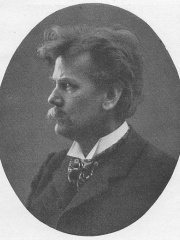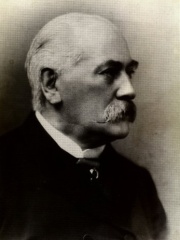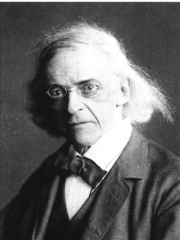
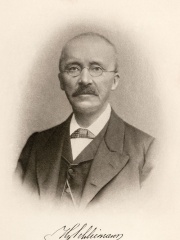
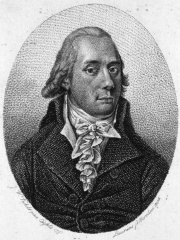
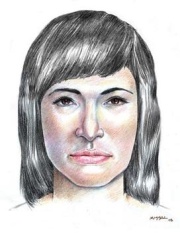
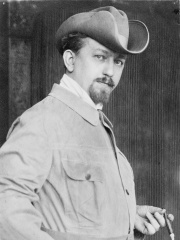
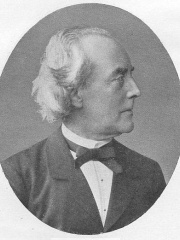
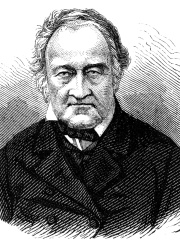
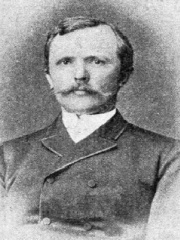
The Most Famous
ARCHAEOLOGISTS from Germany
This page contains a list of the greatest German Archaeologists. The pantheon dataset contains 151 Archaeologists, 19 of which were born in Germany. This makes Germany the birth place of the 2nd most number of Archaeologists.
Top 10
The following people are considered by Pantheon to be the top 10 most legendary German Archaeologists of all time. This list of famous German Archaeologists is sorted by HPI (Historical Popularity Index), a metric that aggregates information on a biography's online popularity. Visit the rankings page to view the entire list of German Archaeologists.

1. Theodor Mommsen (1817 - 1903)
With an HPI of 80.87, Theodor Mommsen is the most famous German Archaeologist. His biography has been translated into 105 different languages on wikipedia.
Christian Matthias Theodor Mommsen (; German: [ˈteːodoːɐ̯ ˈmɔmzn̩] ; 30 November 1817 – 1 November 1903) was a German classical scholar, historian, jurist, journalist, politician and archaeologist. He is widely regarded as one of the greatest classicists of the 19th century. He received the 1902 Nobel Prize in Literature for his historical writings, including The History of Rome, after having been nominated by 18 members of the Prussian Academy of Sciences. He was also a prominent German politician, as a member of the Prussian and German parliaments. His works on Roman law and on the law of obligations had a significant impact on the German civil code.

2. Heinrich Schliemann (1822 - 1890)
With an HPI of 79.87, Heinrich Schliemann is the 2nd most famous German Archaeologist. His biography has been translated into 60 different languages.
Johann Ludwig Heinrich Julius Schliemann (German: [ˈʃliːman]; 6 January 1822 – 26 December 1890) was a German businessman and an influential archaeologist. He was an advocate of the historicity of places mentioned in the works of Homer and an archaeological excavator of Hisarlık, now presumed to be the site of Troy, along with the Mycenaean sites Mycenae and Tiryns. His work lent weight to the idea that Homer's Iliad reflects historical events. Schliemann's excavation of nine layers of archaeological remains has been criticized as destructive of significant historical artefacts, including the layer that is believed to be the Homeric Troy.

3. Johann Friedrich Blumenbach (1752 - 1840)
With an HPI of 69.86, Johann Friedrich Blumenbach is the 3rd most famous German Archaeologist. His biography has been translated into 44 different languages.
Johann Friedrich Blumenbach (11 May 1752 – 22 January 1840) was a German physician, naturalist, physiologist, and anthropologist. He is considered to be a main founder of zoology and anthropology as comparative, scientific disciplines. He has been called the "founder of racial classifications". He was one of the first to explore the study of the human being as an aspect of natural history. His teachings in comparative anatomy were applied to his classification of human races, of which he claimed there were five: Caucasian, Mongolian, Malayan, Ethiopian, and American. He was a member of what modern historians call the Göttingen school of history. He is considered a pivotal figure in the development of physical anthropology. Blumenbach's peers considered him one of the great theorists of his day, and he was a mentor or influence on many of the next generation of German biologists, including Alexander von Humboldt.

4. Isdal Woman (1940 - 1970)
With an HPI of 68.64, Isdal Woman is the 4th most famous German Archaeologist. Her biography has been translated into 22 different languages.
The Isdal Woman (Norwegian: Isdalskvinna, c. 1930–1945 – November 1970) is a placeholder name given to an unidentified woman who was found dead at Isdalen ("The Ice Valley") in Bergen, Norway, on 29 November 1970. Although police at the time ruled a verdict of likely suicide, the nature of the case encouraged speculation and ongoing investigation in the years since. Half a century later, it remains one of the most profound cold case mysteries in Norwegian history.
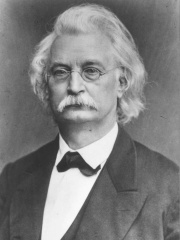
5. Karl Richard Lepsius (1810 - 1884)
With an HPI of 67.36, Karl Richard Lepsius is the 5th most famous German Archaeologist. His biography has been translated into 33 different languages.
Karl Richard Lepsius (Latin: Carolus Richardius Lepsius; 23 December 1810 – 10 July 1884) was a Prussian Egyptologist, linguist and modern archaeologist. He is widely known for his opus magnum Denkmäler aus Ägypten und Äthiopien (Monuments from Egypt and Ethiopia), one of the first scientific studies of the pyramids in Giza, Abusir, Saqqara, and Dahshur. His contributions to Egyptology as director of the German Archaeological Instititute and editor of the Zeitschrift für ägyptische Sprache und Altertumskunde have had a lasting impact on the field.

6. Leo Frobenius (1873 - 1938)
With an HPI of 64.33, Leo Frobenius is the 6th most famous German Archaeologist. His biography has been translated into 32 different languages.
Leo Viktor Frobenius (29 June 1873 – 9 August 1938) was a German self-taught ethnologist and archaeologist and a major figure in German ethnography.

7. Ernst Curtius (1814 - 1896)
With an HPI of 63.43, Ernst Curtius is the 7th most famous German Archaeologist. His biography has been translated into 27 different languages.
Ernst Curtius (; 2 September 1814 – 11 July 1896) was a German archaeologist, historian and museum director.

8. Ami Boué (1794 - 1881)
With an HPI of 63.37, Ami Boué is the 8th most famous German Archaeologist. His biography has been translated into 23 different languages.
Ami Boué (16 March 1794 – 21 November 1881) was a geologist of French Huguenot origin. Born at Hamburg, he was trained in Edinburgh and across Europe. Based on fossil and the strata in which he observed them, he suggested that there were continuous change in the animal forms that existed over time and opposed the theories of catastrophism of the period. He travelled across Europe, studying geology, as well as ethnology, and is considered to be among the first to produce a geological map of the world.

9. Wilhelm Dörpfeld (1853 - 1940)
With an HPI of 63.33, Wilhelm Dörpfeld is the 9th most famous German Archaeologist. His biography has been translated into 25 different languages.
Wilhelm Dörpfeld (26 December 1853 – 25 April 1940) was a German architect and archaeologist, a pioneer of stratigraphic excavation and precise graphical documentation of archaeological projects. He is famous for his work on Bronze Age sites around the Mediterranean, such as Tiryns and Hisarlik (the site of the legendary city of Troy), where he continued Heinrich Schliemann's excavations. Like Schliemann, Dörpfeld was an advocate of the historical reality of places mentioned in the works of Homer. While the details of his claims regarding locations mentioned in Homer's writings are not considered accurate by later archaeologists, his fundamental idea that they correspond to real places is accepted. Thus, his work greatly contributed to not only scientific techniques and study of these historically significant sites but also a renewed public interest in the culture and the mythology of Ancient Greece.
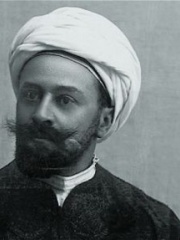
10. Max von Oppenheim (1860 - 1946)
With an HPI of 61.05, Max von Oppenheim is the 10th most famous German Archaeologist. His biography has been translated into 18 different languages.
Baron Max von Oppenheim (15 July 1860 – 17 November 1946) was a German lawyer, diplomat, ancient historian, pan-Islamist and archaeologist. He was a member of the Oppenheim banking dynasty. Abandoning his career in diplomacy, he discovered the site of Tell Halaf in 1899 and conducted excavations there in 1911–13 and again in 1927–29. Bringing many of his finds to Berlin, he exhibited them in a private museum (The Tell Halaf Museum) in 1931. This was destroyed by Allied bombing in World War II; however, most of the findings were recently restored and have been exhibited again at Berlin and Bonn. Oppenheim was a controversial figure before and during World War I because he was considered a spy by the French and British. In fact, he engaged in anti-Allied propaganda, which was aimed at stirring up the Muslim populations of the Allied-controlled territories against their colonial masters.
People
Pantheon has 19 people classified as German archaeologists born between 1752 and 1953. Of these 19, none of them are still alive today. The most famous deceased German archaeologists include Theodor Mommsen, Heinrich Schliemann, and Johann Friedrich Blumenbach.
Deceased German Archaeologists
Go to all RankingsTheodor Mommsen
1817 - 1903
HPI: 80.87
Heinrich Schliemann
1822 - 1890
HPI: 79.87
Johann Friedrich Blumenbach
1752 - 1840
HPI: 69.86
Isdal Woman
1940 - 1970
HPI: 68.64
Karl Richard Lepsius
1810 - 1884
HPI: 67.36
Leo Frobenius
1873 - 1938
HPI: 64.33
Ernst Curtius
1814 - 1896
HPI: 63.43
Ami Boué
1794 - 1881
HPI: 63.37
Wilhelm Dörpfeld
1853 - 1940
HPI: 63.33
Max von Oppenheim
1860 - 1946
HPI: 61.05
Adolf Furtwängler
1853 - 1907
HPI: 59.78
Heinrich Karl Brugsch
1827 - 1894
HPI: 59.61
Overlapping Lives
Which Archaeologists were alive at the same time? This visualization shows the lifespans of the 19 most globally memorable Archaeologists since 1700.

